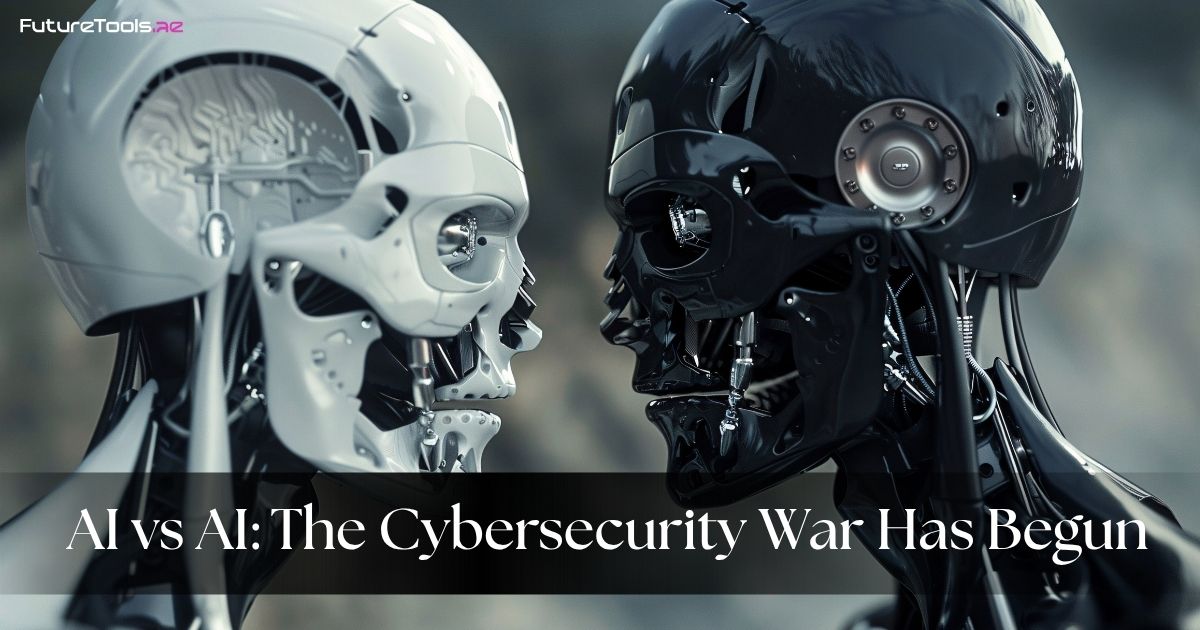Latest AI Tools, Trends & Trusted Reviews!

The future of online security is being rewritten by AI in cybersecurity. As cybercriminals weaponize generative models to launch sophisticated attacks, defenders are deploying AI-driven systems to detect, prevent, and neutralize threats in real time. The result is an escalating arms race — one where bots battle bots, and the stakes are global.
This isn’t a theoretical risk. It’s happening right now — and it’s reshaping how we secure data, infrastructure, and global systems.
Artificial intelligence has supercharged cybercriminal capabilities. What used to require technical skill and manual effort is now accessible to anyone with access to a chatbot.
According to cybersecurity consultant Shane Sims, “90% of the cyberattack lifecycle is now powered by AI.” That includes reconnaissance, payload generation, spoofing, and distribution — all executed at machine speed.
Even mainstream models like ChatGPT, Claude, and Gemini have been used for malicious purposes. Despite built-in guardrails, attackers often find creative workarounds or switch to custom-built rogue models optimized for cybercrime.

What makes AI effective for cybercriminals — pattern recognition and speed — also makes it invaluable for defenders.
Cybersecurity firms are deploying AI to:
Last week, Google’s AI autonomously identified and reported a critical flaw in software used by billions of devices — potentially stopping a global exploit in its tracks. This marks a turning point: AI not only reacts to threats but now predicts and prevents them.
Microsoft also reports that its Security Copilot boosts engineering productivity by 30% and improves detection accuracy across the board.
Sandra Joyce of Google’s Threat Intelligence Group points out that most AI-led attacks aren’t necessarily more advanced — just more scalable. AI allows attackers to launch thousands of low-cost, high-volume attempts, knowing some will inevitably succeed.
For example:
The result is a cybercrime economy projected to cost the world over $23 trillion per year by 2027, according to the IMF and FBI. That figure exceeds the GDP of China — and it’s accelerating.
AI is not infallible. Defensive systems can overcorrect. A misfiring algorithm could accidentally block access to entire countries, misidentify threats, or lock out legitimate users.
The balance between automated protection and human oversight is becoming a top priority. As organizations increase their reliance on AI in cybersecurity, they must also:

Ameca, a humanoid robot created for realistic interactions that uses ChatGPT.
Credit…Loren Elliott for The New York Times
The era of humans vs. hackers is over. The new battlefield is AI vs. AI — and every organization is a potential target.
Whether you’re running a startup or a government network, investing in AI-powered cybersecurity is no longer optional. The stakes are rising, the attacks are evolving, and only automation can keep pace.
Stay ahead of the AI arms race.
Subscribe to FutureTools.ae for daily intelligence on the tools, models, and trends driving the next era of cybersecurity.
